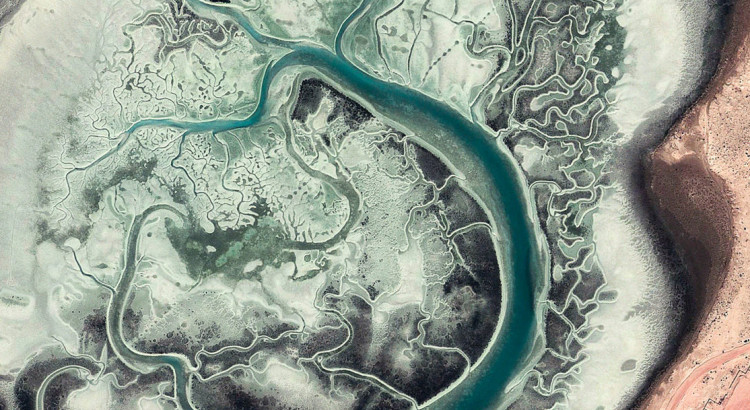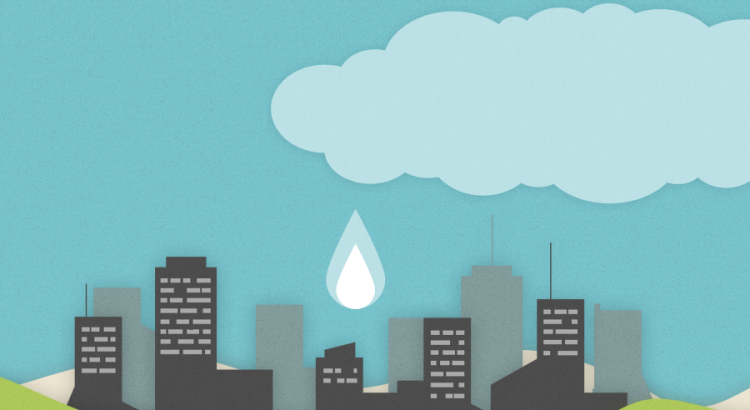Taking images of pathways formed by water in the landscape as inspiration.
http://synapticstimuli.com/Free-from-the-burden-of-boundaries-nations-and-similar-petty-notions

Taking images of pathways formed by water in the landscape as inspiration.
http://synapticstimuli.com/Free-from-the-burden-of-boundaries-nations-and-similar-petty-notions

Early on in starting the project, I asked myself, how does California’s water use (all of it, urban + agriculture + natural systems) weigh against what water we use in hydraulic fracking (natural gas)? Since both are hot topics in the news, and because both involve water, I wanted to do a quick ‘back-of-the-napkin’ comparison.
A. California’s Water Usage
Using USGS data for California, I learned that in 2010, CA drew 38 billion gallons of water per day.[1] This water use includes categories like irrigation, thermoelectric power, public supply, industry, mining, and livestock. Tallying this up to a single year, California uses 13,870,000,000,000 or 13.87 trillion gallons in a year! But what does 13.87 trillion gallons mean? Is this a lot? The state housed 37.35 million people in 2010 and has a $46.4 billion agricultural industry.[2] How does the state’s water usage compare with something like fracking?
B. Hydraulic Fracking Water Usage
Fracking is a process of drilling and injecting fluid into the ground at a high pressure in order to fracture rocks to release natural gas.[3] Most of this fluid is water (98-99%), but the fluid also contains other chemicals. According to a study by the EPA, a typical fracking well in shale requires 2 to 4 million gallons of water usage. All told, in 2010, the study also indicated that 35,000 new wells required 70 to 140 billion gallons of water to operate annually.[4] While it seems like the annual usage of fracking is only roughly two-four times more than California’s daily use, this fact only considers new wells. The US Energy Administration indicates that there are 487,627 active wells in the US, which means there are 14x more wells we need to consider.[5] For all active wells, 1 to 2 trillion gallons of water are used to operate our fracking wells annually (again my figures used 2010 data). My quick, ‘back-of-the-napkin’ math utilizes EPA’s annual figure with the EIA’s number of active wells.
C. In summary
California used 13.87 trillion gallons of water in 2010. Fracking used 1-2 trillion gallons of water. Of course, I am comparing apples to oranges. California is a state that held 37.35 million people in 2010 and grew 95% of America’s tomatoes, 90% of America’s broccoli, and above 85% of America’s produce among seven other fruits and vegatables.[6] Fracking is just a single industry. But what an industry! Fracking consumes 14% of water compared to California, but for an industry that contaminates water we can no longer drink, this sure seems like a huge water waste. And if I looked hard enough, I might find that fracking uses more water than (insert state here).
[1] USGS. http://www.usgs.gov/newsroom/article.asp?ID=3977#.VfBHr2RVikq
[2] California Department of Food and Agriculture (CFDA). http://www.cdfa.ca.gov/statistics/
[3] LiveScience. http://www.livescience.com/34464-what-is-fracking.html
[4] EPA. Draft Plan to Study the Potential Impacts of Hydraulic Fracturing on Drinking Water Resources. http://yosemite.epa.gov/sab/sabproduct.nsf/0/D3483AB445AE61418525775900603E79/$File/Draft+Plan+to+Study+the+Potential+Impacts+of+Hydraulic+Fracturing+on+Drinking+Water+Resources-February+2011.pdf
[5] U.S. Energy Information and Administration (EIA). http://www.eia.gov/dnav/ng/ng_prod_wells_s1_a.htm
[6] California Farm Water Coalition. http://farmwater.org/cafw-grown-commodities/
Curious? (Remember fracking uses up to 2 trillion gallons of water annually)
New York states uses 3.24 trillion gallons of water annually. (http://www.dec.ny.gov/lands/67073.html)
Virginia state uses 3.01 trillion gallons of water annually.